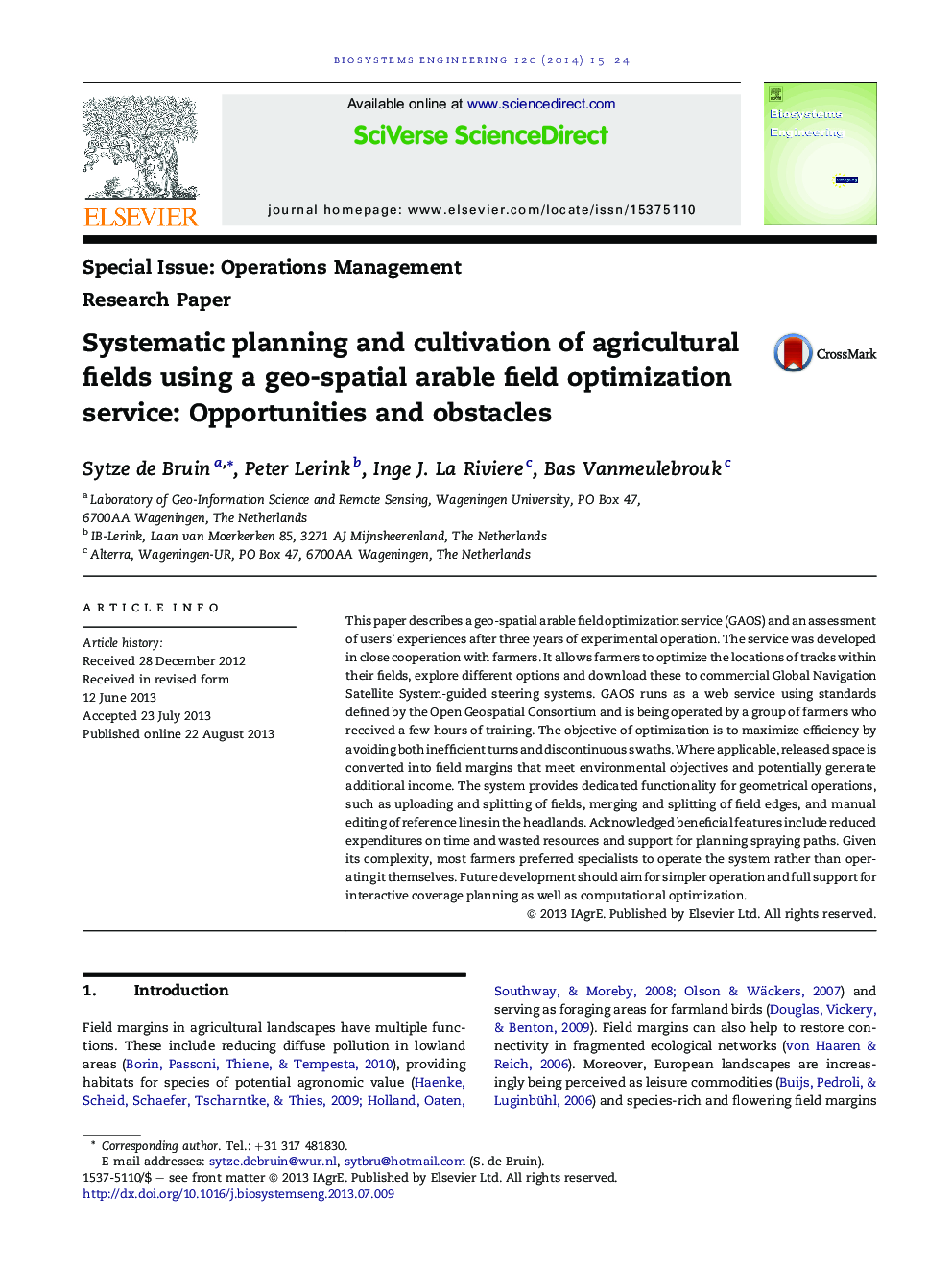| کد مقاله | کد نشریه | سال انتشار | مقاله انگلیسی | نسخه تمام متن |
|---|---|---|---|---|
| 1711145 | 1519541 | 2014 | 10 صفحه PDF | دانلود رایگان |
• Our spatial planning optimizes the locations of machine tracks and field margins.
• It reduces wasting of resources and supports planning of spraying paths.
• We developed and tested a prototype web service implementing open standards.
• Spatial planning of fields requires both automated and interactive procedures.
This paper describes a geo-spatial arable field optimization service (GAOS) and an assessment of users' experiences after three years of experimental operation. The service was developed in close cooperation with farmers. It allows farmers to optimize the locations of tracks within their fields, explore different options and download these to commercial Global Navigation Satellite System-guided steering systems. GAOS runs as a web service using standards defined by the Open Geospatial Consortium and is being operated by a group of farmers who received a few hours of training. The objective of optimization is to maximize efficiency by avoiding both inefficient turns and discontinuous swaths. Where applicable, released space is converted into field margins that meet environmental objectives and potentially generate additional income. The system provides dedicated functionality for geometrical operations, such as uploading and splitting of fields, merging and splitting of field edges, and manual editing of reference lines in the headlands. Acknowledged beneficial features include reduced expenditures on time and wasted resources and support for planning spraying paths. Given its complexity, most farmers preferred specialists to operate the system rather than operating it themselves. Future development should aim for simpler operation and full support for interactive coverage planning as well as computational optimization.
Journal: Biosystems Engineering - Volume 120, April 2014, Pages 15–24
